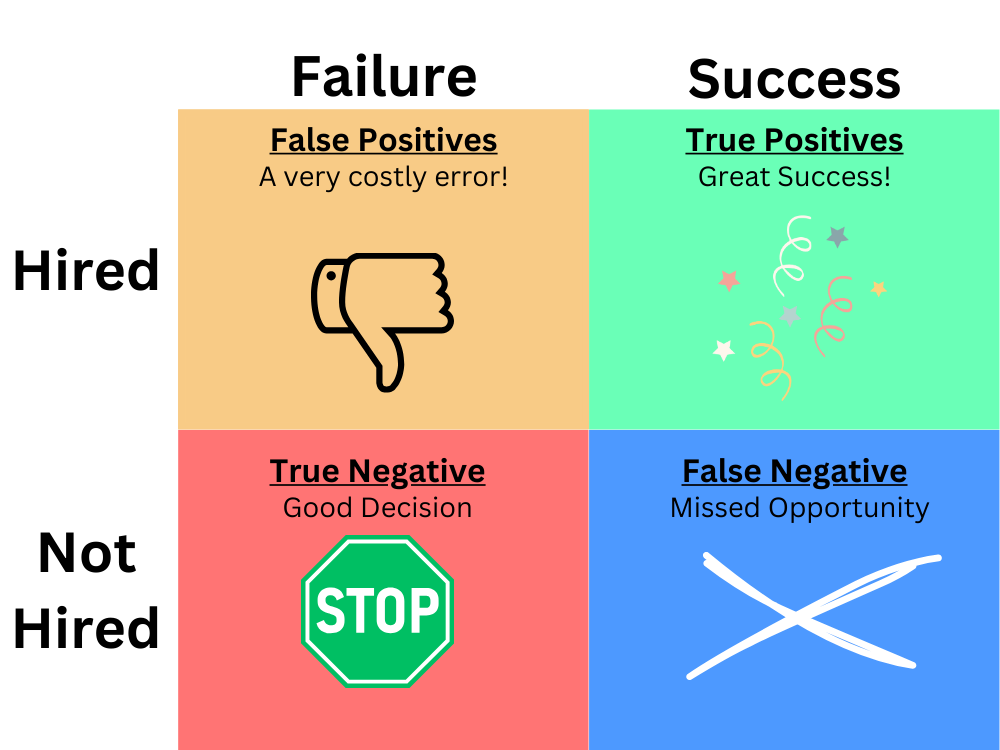10.8 The Importance of Selection Decisions

Image Description
A chart with four grid areas showing false negatives and false positives.
A False Positive is a hired failure – a costly error
A True Positive is a hired success
A True Negative is a not hired failure – a good decision
A False Negative is a not-hired success – a missed opportunity
The principle of employee selection is relatively simple: HR managers collect current information on candidates to predict the future (i.e., how well they will perform a job). However, predicting future human behaviour is known to be very difficult. People are complex, and their behaviour is not as predictable as we would like to think. As a result, perfection in an employee is impossible to achieve. The mistakes or errors can be put in two separate categories, False Positives or False Negatives; the objective is to minimize these errors.
- False Positives: This occurs when you select someone who turns out to be a poor performer. These errors are costly for organizations in terms of production or profit losses, damaged public relations or company reputation, accidents due to ineptitude or negligence, absenteeism, etc. Another type of cost is associated with training, transferring, or terminating the employee. The third type of cost of replacing the employee includes the costs of recruiting, selecting, and training a replacement. Generally, the more important the job, the greater the costs.
- False Negatives: This may be even more costly. It occurs when a selection process fails to detect a potentially good performer. These are harder to detect (i.e., the person is never allowed to perform). As a result, costs associated with ‘false negative’ errors, as they are also referred to, are generally difficult to estimate. Of course, the applicant you didn’t hire may start their own business or join a competing organization!
Organizations want to minimize these selection errors as much as possible or try to make fewer of them than their competitors!
“The Importance of Selection” from Human Resources Management – Canadian Edition by Stéphane Brutus and Nora Baronian is licensed under a Creative Commons Attribution-NonCommercial-ShareAlike 4.0 International License, except where otherwise noted.—Modifications: edited; Removed examples.

